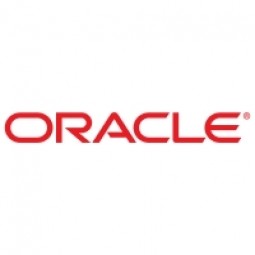
Technology Category
- Infrastructure as a Service (IaaS) - Cloud Databases
Applicable Industries
- Electronics
The Customer
Cannon
About The Customer
Canon is a Japanese multinational corporation specialized in the manufacture of imaging and optical products, including cameras, camcorders, photocopiers, steppers, computer printers and medical equipment. Its headquarters are located in Tokyo, Japan.
The Challenge
Canon wanted to build an infrastructure to enable IoT system to process large amounts of data received from more than 1 million multifunction printers, and support 2x anticipated growth in the number of printers connected to the IoT, and ensure migration to the IoT platform to minimize disruption to global office-products business operations, and deploy a easy-to-manage disaster recovery system to reduce the switchover time in the IoT environment.
The Solution
The solution package includes Oracle Exadata Database Machine, Oracle Exalogic Elastic Cloud, Oracle Coherence, Oracle Service Bus, Oracle Event Processing, Oracle Real Application Clusters, Oracle GoldenGate and Oracle Active Data Guard. The solution package helps Canon improve system performance through receiving and processing large volumes of printer data 5 times faster than what it used to be.
Software Components
- Oracle Coherence
- Oracle Service Bus
- Oracle Event Processing
- Oracle Real Application Clusters
- Oracle GoldenGate
- Oracle Active Data Guard
Software Components
- Oracle Coherence
- Oracle Service Bus
- Oracle Event Processing
- Oracle Real Application Clusters
- Oracle GoldenGate
- Oracle Active Data Guard
Operational Impact
Quantitative Benefit

Case Study missing?
Start adding your own!
Register with your work email and create a new case study profile for your business.
Related Case Studies.

Case Study
Remote Temperature Monitoring of Perishable Goods Saves Money
RMONI was facing temperature monitoring challenges in a cold chain business. A cold chain must be established and maintained to ensure goods have been properly refrigerated during every step of the process, making temperature monitoring a critical business function. Manual registration practice can be very costly, labor intensive and prone to mistakes.

Case Study
Predictive maintenance in Schneider Electric
Schneider Electric Le Vaudreuil factory in France is recognized by the World Economic Forum as one of the world’s top nine most advanced “lighthouse” sites, applying Fourth Industrial Revolution technologies at large scale. It was experiencing machine-health and unplanned downtime issues on a critical machine within their manufacturing process. They were looking for a solution that could easily leverage existing machine data feeds, be used by machine operators without requiring complex setup or extensive training, and with a fast return on investment.

Case Study
Cloud Solution for Energy Management Platform-Schneider Electric
Schneider Electric required a cloud solution for its energy management platform to manage high computational operations, which were essential for catering to client requirements. As the business involves storage and analysis of huge amounts of data, the company also needed a convenient and scalable storage solution to facilitate operations efficiently.

Case Study
Leveraging the IoT to Gain a Competitive Edge in International Competition
Many large manufacturers in and outside Japan are competing for larger market share in the same space, expecting a growing demand for projectors in the areas of entertainment, which requires glamor and strong visual performance as well as digital signage that can attract people’s attention. “It is becoming more and more difficult to differentiate ourselves with stand-alone hardware products,” says Kazuyuki Kitagawa, Director of Service & Support at Panasonic AVC Networks. “In order for Panasonic to grow market share and overall business, it is essential for us to develop solutions that deliver significant added value.” Panasonic believes projection failure and quality deterioration should never happen. This is what and has driven them to make their projectors IoT-enabled. More specifically, Panasonic has developed a system that collects data from projectors, visualizes detailed operational statuses, and predicts issues and address them before failure occurs. Their projectors are embedded with a variety of sensors that measure power supply, voltage, video input/ output signals, intake/exhaust air temperatures, cooling fan operations, and light bulb operating time. These sensors have been used to make the projector more intelligent, automatically suspending operation when the temperature rises excessively, and automatically switching light bulbs. Although this was a great first step, Panasonic projectors were still not equipped with any capability to send the data over a network.









